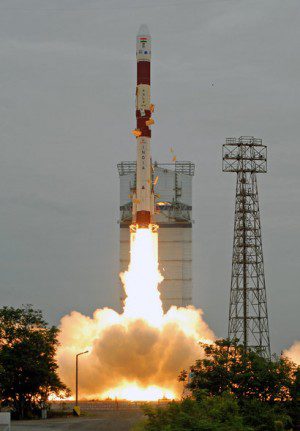
The successful launch of Astrium's SPOT 6 satellite aboard a Polar Satellite Launch Vehicle was India's 100th space mission.
Astrium's SPOT 6 Earth observation satellite was launched successfully Sept. 9, 2012, from the Satish Dhawan Space Center in India, completing the first half of the company's four-satellite constellation.
SPOT 6 will join in orbit Pléiades 1A, a very-high-resolution Earth observation satellite with products distributed by Astrium Services. Both satellites will first work together and will form, in 2014, a complete constellation with Pléiades 1B and SPOT 7, the next satellites on the launch track, to complete the company's full optical constellation.
As soon as they are validated in orbit, SPOT 6 and SPOT 7 will be operated by Astrium Satellites and exploited by Astrium Services in coordination with the two Pléiades satellites in the same orbit. The constellation will offer unique applications, delivering products in an unrivaled delivery time, to Astrium Services' customers.
Each point of the globe will be seen each day once in high resolution and very high resolution. Moreover, while SPOT 6 and 7 will provide a wide picture over an area, Pléiades will be able to offer, for the same zone, products with a narrower field of view but with an increased level of detail (50 cm).
With four satellites phased 90 degrees apart in the same heliosynchronous quasi-polar orbit, we will be able to offer our customers geo-information products in record time, in as little as six hours, says Eric Beranger, CEO of Astrium Services. With four satellites, we obviously have more freedom in terms of the revisit interval, for better change detection or faster coverage. Users can choose between very-high-resolution data capture at a specific point and high-resolution data capture over a larger area. We can also combine the two, of course. For instance, in case of flooding,SPOT 6 can provide the big picture, and Pléiades will bring the focus over the most populated or damaged areas.

